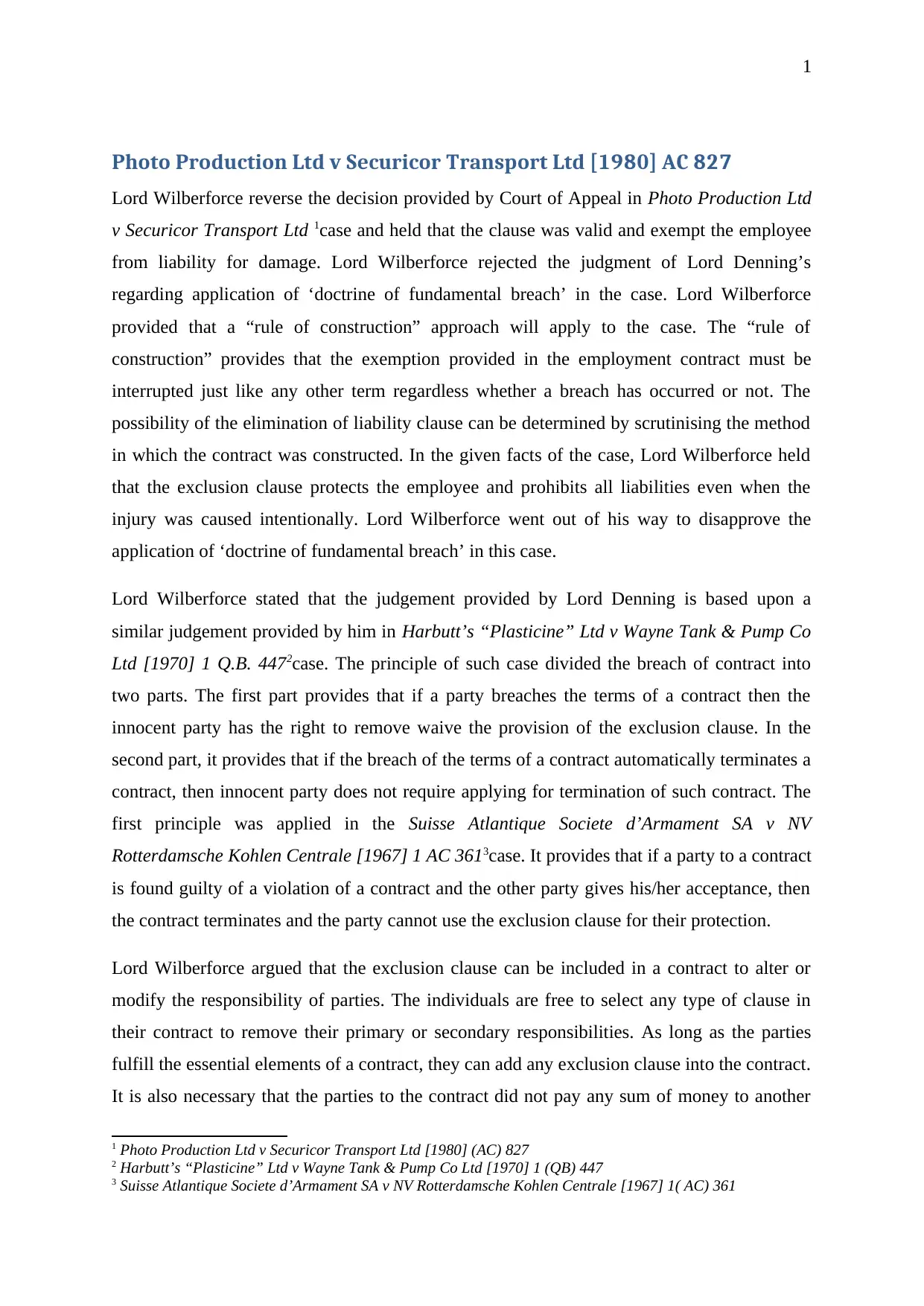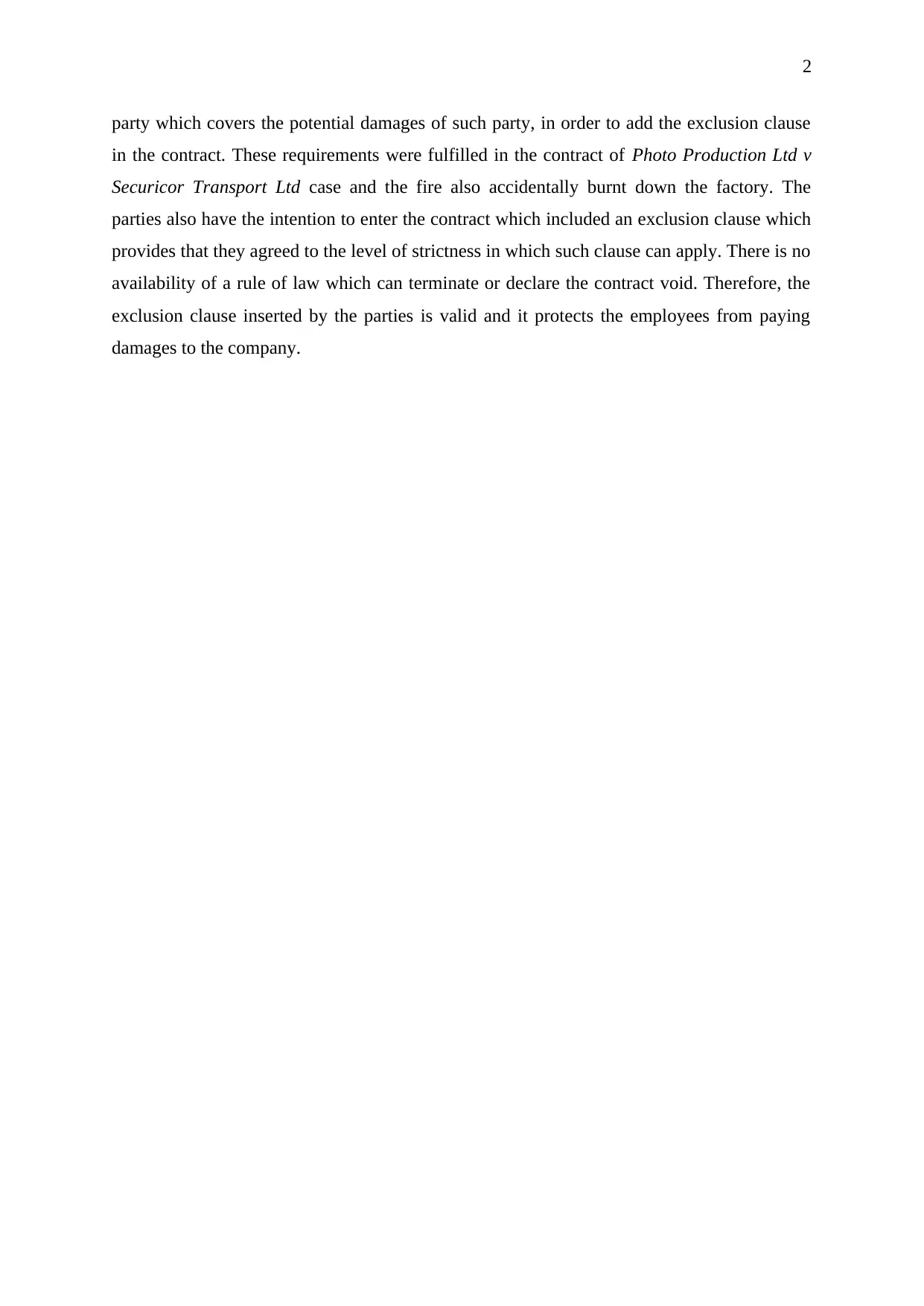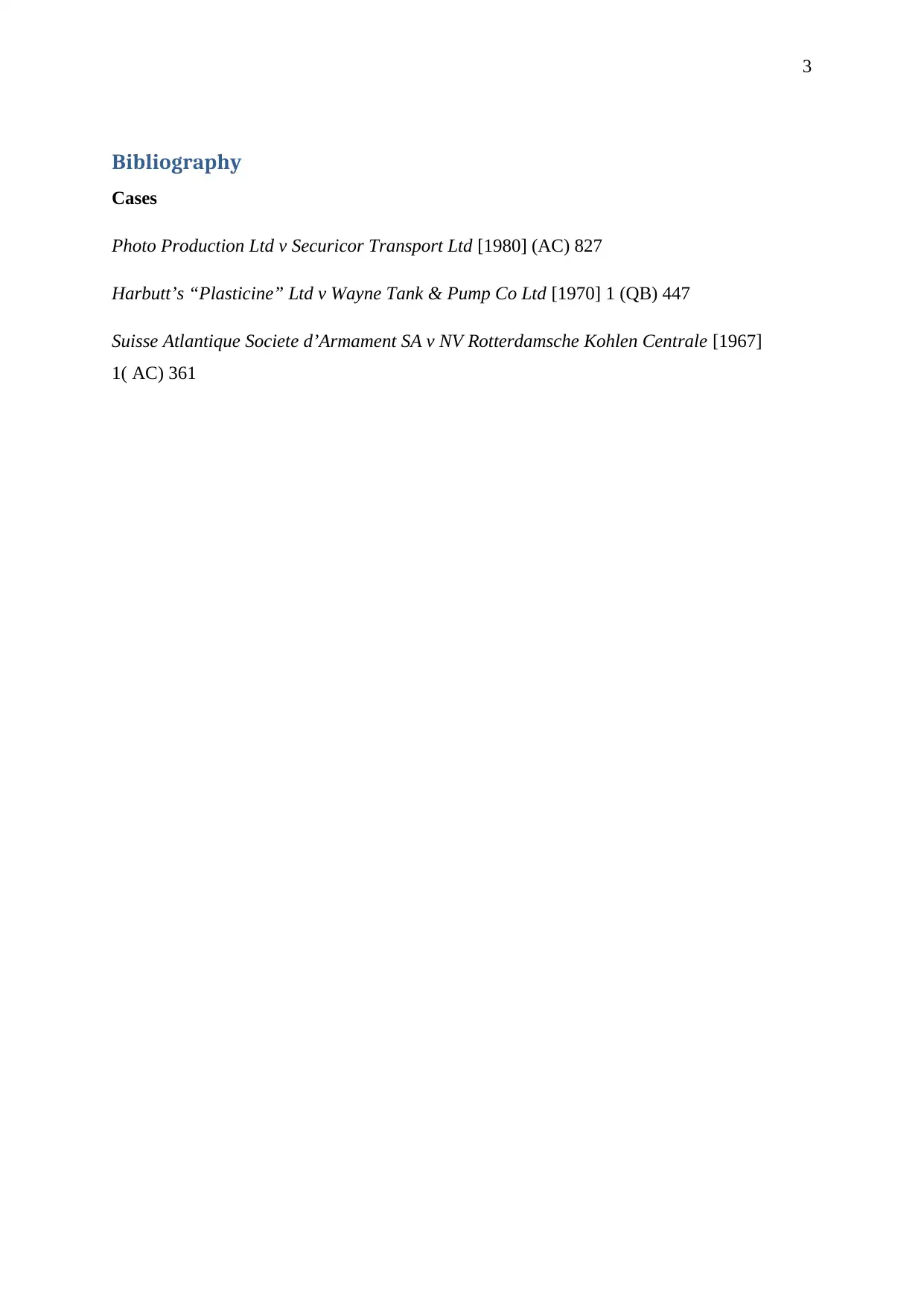Case Study: Photo Production Ltd v Securicor Transport Ltd Analysis
VerifiedAdded on 2020/04/21
|4
|650
|222
Case Study
AI Summary
This case study analyzes the landmark case of Photo Production Ltd v Securicor Transport Ltd [1980] AC 827, focusing on the exclusion clause and its enforceability. The analysis examines Lord Wilberforce's ruling, which overturned the Court of Appeal's decision, and upheld the validity of the exclusion clause. The document scrutinizes the application of the 'doctrine of fundamental breach' and highlights Lord Wilberforce's rejection of this doctrine in the context of the case. It delves into the 'rule of construction' approach, emphasizing the importance of interpreting the exclusion clause like any other term within the contract. The analysis also references related cases such as Harbutt’s “Plasticine” Ltd v Wayne Tank & Pump Co Ltd [1970] 1 Q.B. 447 and Suisse Atlantique Societe d’Armament SA v NV Rotterdamsche Kohlen-Zentrale [1967] 1 AC 361 to provide a comprehensive understanding of the legal principles involved. The document underscores the freedom of parties to include exclusion clauses and the requirements for their validity, including the absence of payment for potential damages and the mutual intention to include such clauses, as was the case with Photo Production Ltd v Securicor Transport Ltd.
1 out of 4











![[object Object]](/_next/static/media/star-bottom.7253800d.svg)